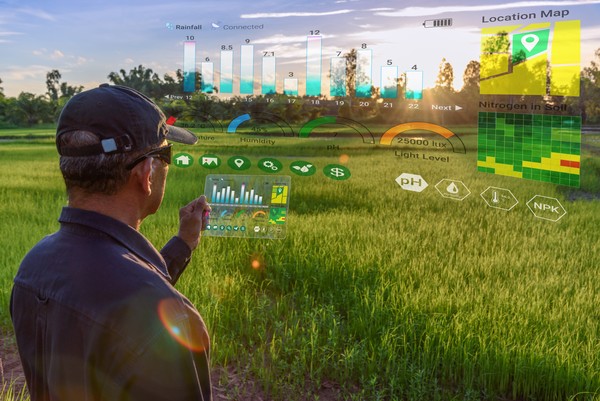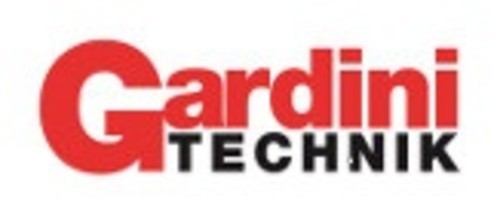
The country logbook, from paper to the cloud
The legislative requirement to record all activities carried out on the farm fosters the development of dedicated software. Such systems, in addition to simplifying data entry and management, improve resource utilization and production traceability
As provided for by the Consolidated Text on Agriculture (Legislative Decree 228/2001) and related implementing decrees, the Logbook (QdC) is a register to be compulsorily filled in by all farms, in which the different processes carried out related to the phenological phases of the crops implemented, must be recorded. Its filling-in is left to the farm owner (or agricultural service centers in his stead), following a chronological order and reserving a sheet for each individual crop. Particular attention must be paid to phytosanitary treatments, specifying the product distributed, the degree of toxicity, the quantities used, the adversities that made the interventions necessary and the dates of the treatments, which must be recorded no later than 30 days after harvest. Together with the purchase invoices for the products used, the QdC must be kept for at least 3 years because the official monitoring and control plans of the territory provide for its verification. As a matter of fact, the QdC allows the traceability of a product along the entire supply chain. Also, with regard to pest management, the need for transparency towards consumers requires producers to comply with precise obligations: failure to comply results in administrative sanctions, while in the case of repeat offenses, this can lead to suspension or even revocation of the license that qualifies for the purchase and use of plant protection products. Since last January, the transmission of the QdC in telematic form has been mandatory for those submitting single applications: this is, in fact, the transition to the final digitization of this important document.
Digitization. The paper compilation of QoCs is time-consuming, requiring several hours of work, not only for recording activities but also, for example, for calculating the correct doses of fertilizers or pesticides to be distributed. The transition to digital has revolutionized the approach to this task. In fact, digital QdCs represent a versatile solution because data related to the various processes can be entered directly on computers or mobile devices, thus being able to access the information from anywhere and at any time, among other things, reducing the risk of transcription errors. Sharing data (with other team members or farm advisors) is also facilitated, promoting collaboration and shared planning for optimizing activity. Not only that but other aspects, such as process traceability and compliance with food safety regulations and standards, are also facilitated, as this enables certification of the origin and safety of products. The market for digital QdCs and similar software for managing agricultural activities is vibrant. At the Italian level, examples include AgriOpenData by EZ Lab from Padua, which provides digital solutions for agriculture; Agriverse of Bari, which offers a digital tool designed specifically for small- and medium-sized farms as well as for agronomic studies and cooperatives; Agricolus of Perugia, which has developed software and digital tools for precision agriculture; and Gesag of S. Angelo di Piove di Sacco (Padua), which has implemented a set of technologies and solutions for companies operating in both open field and specialized crops; Quaderno di Campagna by Image Line from Faenza (Ravenna), managing the treatment register. Of note, Coldiretti's "Member Portal" has redefined the digital QdC, with the recording and sending of phytosanitary treatment data directly from the field via smartphone, tablet or PC.
ISOBUS and Farm Management Softwares. The introduction of ISOBUS, i.e., the standardized data communication protocol for agricultural machinery, has undoubtedly given a great boost to interoperability between different electronic devices and agricultural machinery, making possible a smooth exchange of data between field sensors, controllers and on-board computers, with automatic compilation of field logbooks, thanks to the direct, fast and efficient transfer of operational information. So-called Farm Management Software (FMS) thus represents the frontier of automation in QdCs: thanks to integrated sensors and connectivity with "smart" farm machinery, FMSs greatly reduce farmers' workload while improving the accuracy and timeliness of surveys. Some evolved versions of this software include the ability to interface with drones and ground sensors to constantly monitor crop health status and soil moisture to optimize irrigation and fertilization.
Most of this software relies on cloud computing platforms to access its data from anywhere and in real-time to improve crop traceability and to be able to make thoughtful and timely decisions about which agricultural practices to carry out. Leading tractor manufacturers, including John Deere, CNH and AGCO, already offer comprehensive solutions that include machines equipped with sensors and advanced software that can interpret the data collected. John Deere offers a wide range of precision farming solutions, including data transfer from mixed fleets to the JD Operations Center wirelessly for its brand models and with ISOXML display and USB stick or MyTransfer app for others. CNH uses a system called "Precision Farming," which includes automatic compilation of the farm logbook, among other things.
Challenges toward digital transformation. In the Italian agricultural environment, however, the described development faces significant structural challenges: the field size is often small and fragmented, with the average farm size not exceeding 12 ha. Furthermore, the majority of agricultural entrepreneurs are over 60 years old, and college graduates do not exceed 10 percent. The rate of farm computerization is still low; for example, Italy has a large fleet of tractors but with a high average age and a very significant underutilization rate. The lack of specific skills of the various actors in the supply chain, coupled with the unfamiliarity of on-board tools and sensors and the continuing infrastructural inadequacy of broadband Internet connections, are further obstacles to a desirable acceleration toward digital transition.
Future developments. Artificial Intelligence (AI) support will undoubtedly revolutionize the management of field logbooks by suggesting optimal times to sow and harvest. In addition, AI can provide more accurate crop yield predictions and, more generally, fine-tune management strategies to maximize yields and reduce risks. The adoption of so-called "blockchain technology" (well known in cryptocurrency transactions), i.e., the ability to record and authenticate each passing block of data, immutably and distributed across multiple network nodes, can also help ensure greater transparency and reliability of information regarding agricultural practices, resource management, and crop results, helping to prevent fraud and data manipulation. Standardization and interoperability among field logbooks are critical to ensure effective dissemination and optimal collaboration among different agricultural stakeholders. Implementation of common standards for data collection, management, and exchange will facilitate knowledge sharing aimed at improving agricultural practices, which will benefit the sector's sustainability.
The "license” for the use of plant protection products
The issuance and use of the so-called "phytosanitary patent" is basically regulated in Legislative Decree 150 of August 14, 2012. It is an essential qualification for the purchase, use, handling and disposal of plant protection products intended for professional use. It is issued to individuals over 18 years of age who have successfully completed a specific training course lasting 20 hours, inherent to the knowledge of plant protection products, the rules and regulations of use, safety and protection (of the operator, the environment and the final consumers of the products treated) as well as integrated resource management. The certificate obtained is valid for five years and is renewed through participation in periodic, 12-hour refresher courses. The main purpose of the phytosanitary license is to manage the use of potentially dangerous products with the utmost care, adequately protect human health and preserve the environment and biodiversity at the highest possible level, as well as ensure the best quality of the marketed products.








